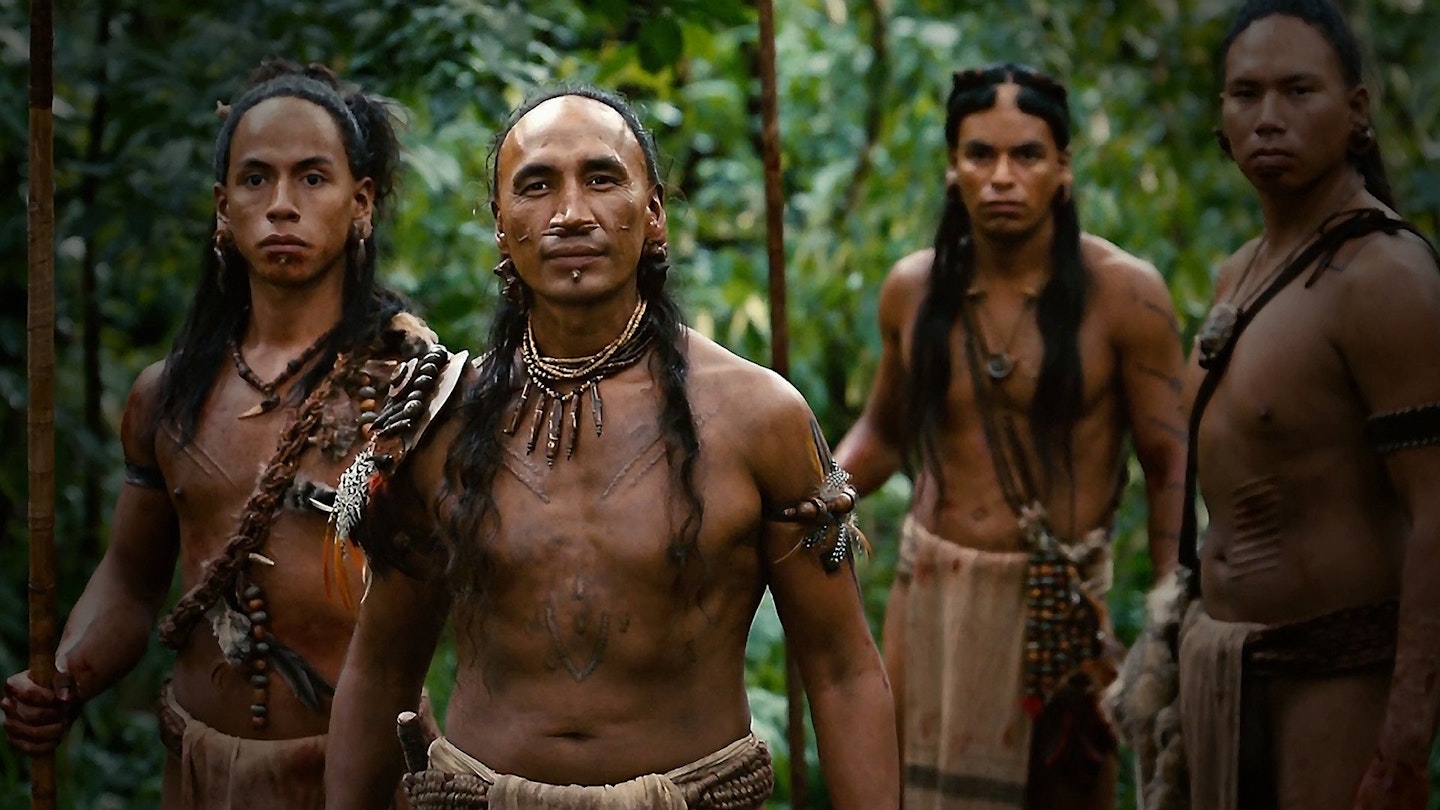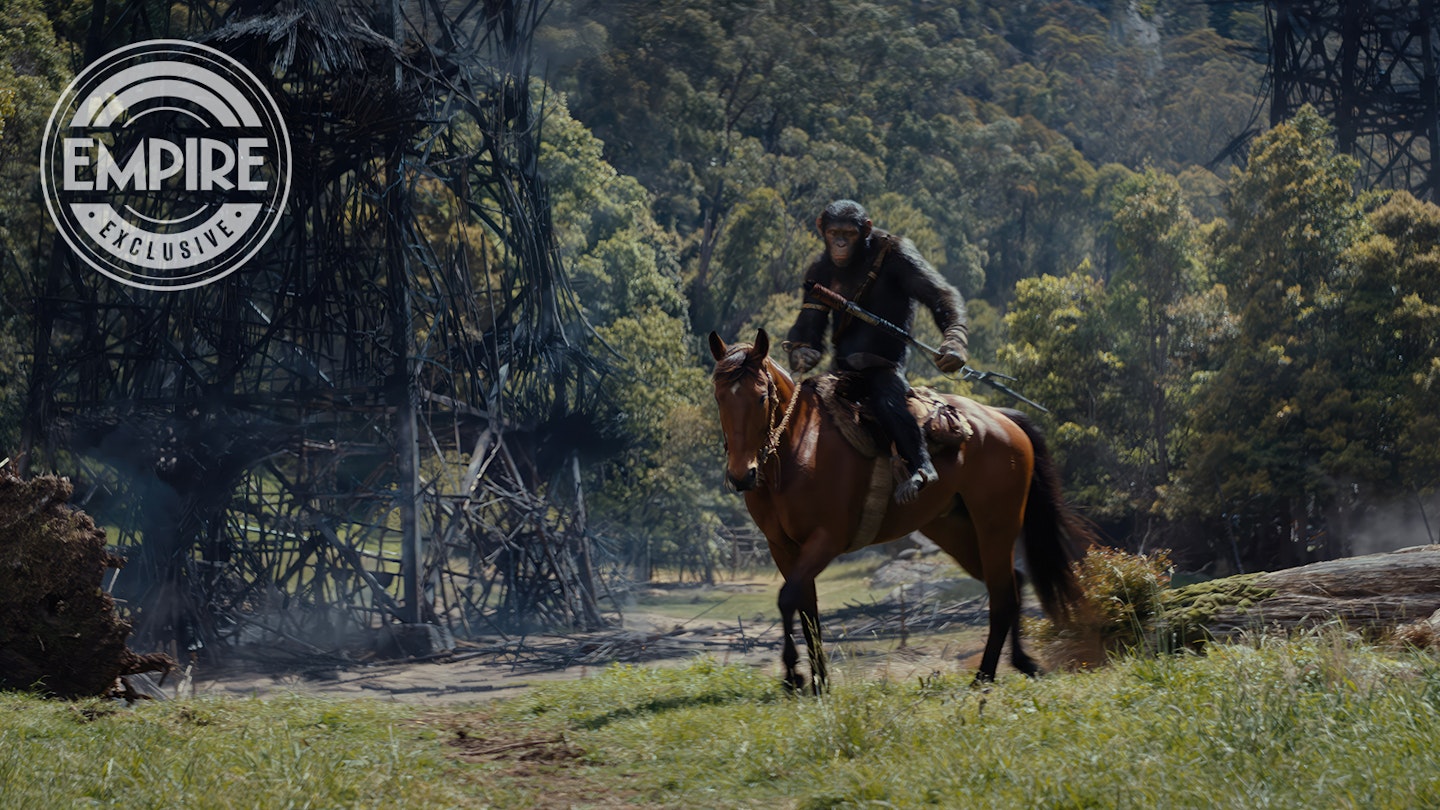Before we plunge into the treacherous undergrowth of the Yucatán, let’s get something out of the way. This is a review of Apocalypto, not of Mel Gibson; of a movie about Mayans and a civilisation on the verge of collapse, not of a drunken rant in Malibu and a reputation forever tainted.
If the ‘sugartits’ incident had happened before the release of The Passion Of The Christ, which suggested the anti-Semitic sentiment that was to be so publicly vented on July 28, 2006, then it would be relevant to discuss the two together. Yet however hard you look — and some people will be looking hard, assuming they’re willing to chuck any money Gibson’s way (and that’s a decision that should be made independently of this review) — there’s nary a trace of Gibson’s objectionable views in Apocalypto. The shadow of the Holocaust does fall over the film’s second act, as our harried hero Jaguar Paw (Rudy Youngblood) clambers desperately over a mass grave, but that’s truthfully about as close as you’ll get.
Of course, it is ‘Mel Gibson’s Apocalypto’, and other aspects of his personality permeate. His Catholicism is certainly relevant, given that the people he’s portraying would eventually be decimated by rapacious followers of Gibson’s own faith, and it’s interesting that the film implies the arrival of Christians in the Americas would ultimately be a bad thing.
His jockish sense of humour is also evident in the early scenes where he depicts the everyday life of Jaguar Paw and his fellow villagers. Keen to portray them as regular guys — they may have dangly earlobes and walk around with their butt-cheeks hanging out, but they’re just like you and me — he makes one character, the burly, insecure Blunted (Jonathan Brewer), the victim of a practical joke. He even squeezes in a mother-in-law gag or two for good measure. The subtitles, meanwhile, are rife with Americanisms, one scene even strangely referencing Midnight Cowboy as Holcane chief Zero Wolf (Raoul Trujillo) barks, “I am walking here!” at a group of foresters, after nearly being crushed by a falling tree.
The film is also studded with Gibson’s filmmaking trademarks; few people would have needed the poster’s announcement of authorship to realise that the director of Braveheart and The Passion was behind this. Need a vengeance motive? Slit someone’s throat. Got an action scene to pep up? Shoot it in slo-mo. Want some atmosphere? Make sure you bathe your actors in the orange, flickery glow of torchlight. And there must, absolutely must, be at least one public execution. Oh, and did we mention the violence?
Gibson loves his violence. He likes it brutal, bloody and in your face. And he does it very well. Whatever you think of The Passion, you can’t deny he managed to construct the most effective, upsetting flogging and crucifixion scenes in cinema history. Here we have arrows and spears puncturing flesh, beating hearts ripped from twitching bodies, brain matter exposed by an axe blow and a man having his face gnawed by a furious she-jaguar. One stand-out fight scene even shows the air misting crimson upon an ultra-slow-motion clash. This is graphic with a capital G — and not without its fair share of gross-out moments. Within the first five minutes we witness a man eating the still-throbbing testes of a slaughtered tapir. That kinda sets the tone. If it had been made by anyone else and released 20 years ago, Apocalypto would have been a video nasty.
This is all at least partly about veracity — it was, literally, a jungle out there, so why shy away from the harshness? Gibson has done his utmost to portray Mayan civilisation as accurately as the evidence will allow, and his beautifully shot recreation is impressive, from the big sets (particularly the great pyramid that looms large in Jaguar Paw’s destiny) to the tiniest details (using live ants to suture wounds). Hence his Passion-like decision to exclusively use a now rarely-heard dialect and enlist a cast of unknowns.
Not all of them are making their debuts — Raoul Trujillo was recently seen in The New World and, er, Frankenfish — and they’re certainly not all genuine natives of the Yucatán. The lithe and intense Rudy Youngblood is a pow-wow performer from the US, while Jonathan Brewer is Canadian. But many of the bit-parters and extras are bona-fide Mayans; some had never seen a car or non-earth floor before. Whatever their experience, Gibson ensures the performances — even from the children — are convincing throughout, and the film benefits significantly from the absence of big-star baggage. Back when he first announced this project, Gibson said he was trying to satisfy “a hunger for something a little different”, and in terms of setting and casting, he’s done just that.
In terms of narrative, though, Apocalypto is highly conventional — right down to the plot-holes. It’s unashamedly a straightforward action-chase flick, its wilderness-survival element pushing virtually every jungle-jeopardy cliché (snakes, bugs, big cats, waterfalls, quicksand). Jaguar Paw has a destiny laid out for him, is aided by a few heavy-handed deus-ex devices and, like a true action hero, suddenly overcomes seemingly grievous wounds whenever the story demands it, his resourcefulness winning out over his foes’ ferocity. Mixing in elements of First Blood, Conan The Barbarian and Predator, Apocalypto’s derivativeness as an action movie is thankfully tempered by Gibson’s mastery of the genre. Once the chase is on and Zero Wolf and his men are snapping at Jaguar Paw’s heels, Gibson maintains a gripping pace throughout.
In fact, he becomes so intent on pushing the action envelope, one other key element becomes neglected: the whole question of how and why this civilization crumbled. Never lifting the perspective beyond that of Jaguar Paw, we witness plague, famine, decadence and pollution, but only in passing. There’s little time for reflection and we’re hardly ever pulled back to see the big picture.
This flaw is thrown into further relief by the obvious attempts to analogise the Mayan situation with our own. “A great civilisation is not conquered from without until it has destroyed itself from within,” goes the pre-credits quotation. “Fear is a sickness,” we’re told soon after. Then there’s the wise old patriarch’s story about how Man will go on taking and taking until the World tells him, “I have nothing more to give.” The problem is that Gibson’s telling but not really showing; what he’s more concerned with showing is a hell of a lot of blood and a string of bone-crunching fight scenes. Which, admittedly, may not be a problem if all you’re looking for are primal, visceral thrills — and a pregnant woman beating a monkey to death with a stalactite.







